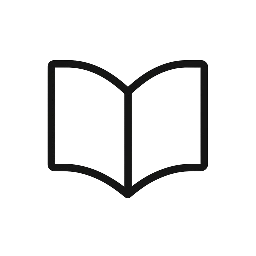Review of Literature and Incorporating Theory
NRS 441 Grand Canyon Week 2 Assignment 1
Review of the Literature
Details:
Write a paper (1,500-2,000 words) in which you analyze and appraise each of the (15) articles identified in Topic 1. Pay particular attention to evidence that supports the problem, issue, or deficit, and your proposed solution.
Hint: The Topic 2 readings provide appraisal questions that will assist you to efficiently and effectively analyze each article.
Refer to “Sample Format for Review of Literature,” “RefWorks,” and “Topic 2: Checklist.”
Prepare this assignment according to the APA guidelines found in the APA Style Guide, located in the Student Success Center. An abstract is not required.
You are required to submit this assignment to Turnitin. Please refer to the directions in the Student Success Center.
Topic 2: Checklist
Review of Literature and Incorporating Theory
Instructions:
This checklist is designed to help students organize the weekly exercises/assignments to be completed as preparation for the final capstone project proposal. This checklist will also serve as a communication tool between students and faculty. Comments, feedback, and grading for modules 1-4 will be documented using this checklist.
NRS 441 Grand Canyon Week 2 Assignment 2
Incorporating Theory
Identify a theory that can be used to support your proposed solution.
Write a summary (250-500 words) in which you:
1- Describe the theory and your rationale for selecting the theory.
2- Discuss how the theory works to support your proposed solution.
3- Explain how you will incorporate the theory into your project.
Refer to the “Topic 2: Checklist.”
Prepare this assignment according to the APA guidelines found in the APA Style Guide, located in the Student Success Center. An abstract is not required.
You are not required to submit this assignment to Turnitin.
Topic 2: Checklist
Review of Literature and Incorporating Theory
Instructions:
This checklist is designed to help students organize the weekly exercises/assignments to be completed as preparation for the final capstone project proposal. This checklist will also serve as a communication tool between students and faculty. Comments, feedback, and grading for modules 1-4 will be documented using this checklist.
MORE INFO
Review of Literature and Incorporating Theory
Introduction
There are a lot of ways to get information for your writing. When you’re starting out, it’s often easiest just to take what the experts tell you and put it into an essay or paper. However, over time, as your writing skills improve and real life experience gives you more perspective on what’s important in the world around us, your ability to gather data becomes a little more refined. In this blog post we’ll go over how I go about selecting literature and analyzing information so that I can incorporate theory into my writing.
Selecting and Sourcing Literature
If you are writing a book report or essay, the first step is to select the source of your information. You can use your own personal experience or you can use literature. The choice is yours! As always, it is important to determine how much time you have available for research and writing so that you don’t overwhelm yourself with too much information at once.
After identifying what sources will be needed for your project, it’s time to get started! The first thing that needs doing is finding a place for all of this new information—whether it comes from writing assignments or other classes (like social sciences), personal experiences (like those related by family members), informational websites about topics related to what we’ve covered thus far in class etcetera…
Organizing and Analyzing the Literature
As you read through your literature review, it’s important to organize and analyze the material. There are many ways to do this, but one effective way is to use a systematic approach. You can organize by topic or author, or even by genre (e.g., fiction vs nonfiction). To make sure that your organization is logical, try writing out each section in order before going on to write the introduction and conclusion sections of your paper!
Example: In this example we’ll look at how one student organized their literature review based on three different topics: “The Power of Storytelling” by Gloria Steinem; “The Art of Storytelling” by Diana Taurasi; and finally “Storytelling Skills for Success” by Carol Graybill Stithzner (all available online).
Incorporating Theory into Your Writing
Theory is a powerful tool for understanding and explaining the world. It can help you make sense of literature you are reading, as well as guide your research and situate it in a broader conversation about the topic.
It can also help you understand how the world works and make better decisions.
But how do we use rhetoric to make better decisions? In their book “The Art of Rhetoric,” the Roman philosopher Quintilian and his student, the lawyer Cicero, suggest that there are two types of rhetoric: forensic and deliberative.
Forensic rhetoric is used to defend or prosecute a case, and deliberative rhetoric is used to make decisions about what course of action should be taken. They both use the same tools — including pathos (emotion), logos (logic) and ethos (credibility) — but in different ways.
Conclusion
Reading literature is a great way to improve your writing. It’s also important to have some knowledge of theory so that you can incorporate it into your own writing. When you combine these two things, you will be able to create more effective texts and essays!

Leave a Reply